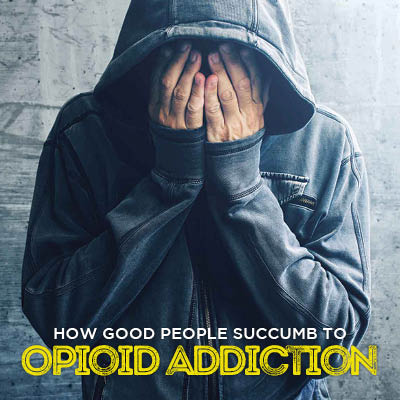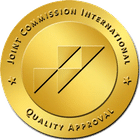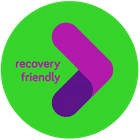
Drug addiction does not only happen to the stereotypical person who is recklessly using and abusing illegal street drugs. It can happen, often by accident, to people who are going through a difficult time and are caught unaware while using prescription opiate medications.
The rate of opiate addiction and death has quickly skyrocketed and is getting out of hand with each year that goes by. President Trump has recently called the problem a public health emergency, and that is not an exaggerated response, because more than 46 people throughout the United States are dying per day from opiate overdoses. That is a result of prescribed medications. This is truly alarming, and the problem got out of hand seemingly overnight.
How addiction happens
Opiate addiction often results from a person starting with a legitimate prescription for a needed medication.
After experiencing a significant medical issue, such as an injury or a surgery, they are prescribed an opiate medication, and their body begins to develop a tolerance to the medication the longer they take the drug. As time goes on, they need a larger dose of the medication to achieve the same pain-reducing effect, so of course, they take more, and over time they become both physically and psychologically addicted. People who suffer from severe pain, and/or pain over longer periods of time, are at a greater risk because they take pain medication for longer.
When they try to stop taking opiate medications, they may have trouble because they can experience painful withdrawal symptoms. That also makes it more difficult to discontinue use and can contribute to addiction.
Another unintended result of opiate use for pain reduction, and one that can contribute to addiction, is the mind-based effects of the medications. Opiates can cause the person taking them to experience a sense of euphoria. People who take opiates over time may not just take them for reduction of physical pain but also to achieve that sense of euphoria.
Groups at risk of drug abuse and addiction
Certain demographics are more likely than others to become addicted to opiate medications, although the problem has cut across many age, income, occupation and racial groups among both men and women. One of the groups most at risk has been workers in the construction industry.
There are many factors contributing to that problem. For one, work in that industry is physically rigorous and can lead to injuries and pain. Workers who are in their 40s or older may recover more slowly from those types of physical problems, thus causing them to turn to medications that can ease their pain. But, when people are being affected by those medications while they are on the job, there are increased safety risks to themselves and others such as their coworkers.
Employees in the transportation are also heavily affected, which has resulted in the DOT changing its drug testing regulations to combat the problem.
Opiate abuse stats
The Centers for Disease Control and Prevention (CDC) has been keeping statistics on opiate use and abuse, and the numbers are truly alarming:
- 46+ people die each day from prescription opiate overdoses.
- More than 180,000 people died as a result of opiate use between 1999 to 2015.
- In 2016, the highest death rates from opiate overdose occurred in people who were between 25 to 54 years old.
- In 2016, upwards of 40% of opiate overdose deaths in the United States resulted from prescription opiates.
- In 2014, more than 2 million people in the United States were abusing or were addicted to prescription opiates.
It is clear that opiate prescription abuse and overdose is a problem that is not going away on its own. It requires serious and immediate action, including initiatives that involve connecting people who are addicted to opiates to professional treatment and recovery.
Professional treatment for recovery
It is important for people who become addicted to opiate medications to seek professional treatment to assist with their recovery.
The process of recovering from prescription drug addiction can be complex and difficult, so having a professional to lead the way is critical. Treatment should be customized to the person’s needs and typically involves a variety of approaches, such as behavioral therapies, education, counseling, nutritional support, and exercise.
Preventing opiate abuse
As a result of the widespread use of prescription opiate medications and the serious risks that abuse poses, many employers have implemented comprehensive drug free workplace policies, which include a random, post accident, and reasonable suspicion drug testing.
It is tragic that prescription opiate use, abuse, and addiction have gotten so out of control so rapidly. But, by helping people struggling with opiate addiction to get into professional treatment rather than trying to handle it on their own, and by employers incorporating comprehensive drug testing policies to prevent or reduce abuse, we can make workplaces and society as a whole safer, healthier, happier, and more productive for everyone.
If you or a loved one are struggling with prescription or overall opiate use, we can help! Here at GateHouse, we are available to you 24/7. Call us at (855) 448-3588.
- Cymbalta Withdrawal: Causes, Symptoms, And Management - October 12, 2023
- Boredom in Recovery: 5 Tips to Avoid Relapse - October 6, 2023
- Overconfidence and Rehab: Avoiding Relapse - October 4, 2023




